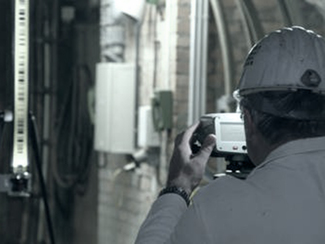Safety and radiation protection
Comprehensive monitoring measures serve to ensure the current and future safety of the Morsleben repository. The mine safety of the site is being controlled and the radiation exposure to persons, facilities and the vicinity of the repository is being monitored.
The objective is to provide consistent proof of the radioactive materials discharged from the mine and to quickly detect possible changes in order to be able to take action should this become necessary.






